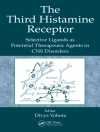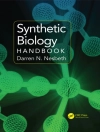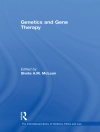For decades clinical electrophysiology has been considered a discipline for adepts, able to interpret not so obvious intracardiac signals. With the advent of new technologies, offering a three-dimensional reconstruction of cardiac anatomy and generating colour-coded maps, the approach to the complex world of electrophysiology is changing: A three-dimensional colour-coded electroanatomic map of a left atrium could be a precise and self-explanatory representation based on intracavitary signals, on which correct diagnosis is made and successful ablation is performed. As expected, this makes the difference especially in cases exhibiting complex arrhythmias (atypical atrial flutters, postsurgical arrhythmias), in which the task could be really tough.
The book is based on a multicentre experience and describes the most difficult cases of each centre, as far as arrhythmia is concerned. For each case, the crucial role of electroanatomic mapping in providing unique information and new insights in a field still in evolution is very evident. The book will prove to be very a useful tool for all the operators working in this field.
Spis treści
Focal Atrial Arrythmias.- Electroanatomic Mapping in Evaluation of Complex Atrial Arrhythmias.- Focal Atrial Arrhythmias.- Focal Atrial Tachycardia in the Right Atrium in a Postsurgical Patient: Rare but Possible.- Focal Atrial Tachycardia in an Enlarged Right Antrium after Rastelli’s Operation: Ambiguous Mapping Data in Confict with the Orthodoxies.- Focal Atrial Tachycardia Associated with a Macroreentrant Tachycardia: Two Arrhythmias with Different Mechanisms and Similar Morphologies in a Non-surgical Left Atrium with Electrically Silent Areas.- Focal Atrial Tachycardia From the Right Superior Pulmonary Vein with Irregular Cycle and P Wave Morphology: the Missing Link in the Chain Connecting Organized and Disorganized Atrial Arrhythmias?.- Focal Atrial Tachycardia from the Right Superior Pulmonary Vein with Stable P Wave Morphology and Cycle Length: the Problem of Discriminating between a Right and Left Origin.- Macroreentrant Atrial Tachycardia/Flutter.- Counter-clockwise Atrial Flutter in the Donor’s Right Atrium After Heart Transplantation: a Peculiar Example of Single-Loop Right Atrial Reentry.- Single-loop Macroreentry in the Left Atrium in an “Atrial Cardiomyopathy”: Discrimination between Right and Left Circuits and the Paradox of Proximal-to-distal Coronary Sinus Activation in a Left-sided Arrhythmia.- Double-loop Reentry in the Right Atrium with a Shared Mid-Diastolic Isthmus in a Postsurgical Patient: Identifying and Targeting the Shared Isthmus.- Double-loop Reentry in the Left Atrium with a Shared Mid-Diastolic Isthmus in a Non-surgical Patient with Left Atrial Scarring: a More Common than Expected Arrhythmia?.- Macroreentrant Atrial Tachycardia in a Left Atrium With a Prosthetic Mitral Valve (Example 1): a Reentrant Circuit Confined to the Left Atrial Roof and the Need for Reconstruction of the Entire Reentrant Circuit.- Macroreentrant Atrial Tachycardia in a Left Atrium With a Prosthetic Mitral Valve (Example 2): the Problem of Minimal Amplitude Potentials.- Counter-clockwise Isthmus-Dependent Peritricuspid Reentry with an Atypical Electrocardiographic Pattern: what Should Be Complex is not Always Actually Complex.- Recurrence of Typical Counter-clockwise Atrial Flutter in a Postsurgical Patient: an Unexpected Trap.- Two Macroreentrant Tachycardias in a Patient after Fontan Surgery: the Difference between “Isthmic” and “Rotational” Atrial Macroreentry.- Organised Atrial Arrhythmias after Atrial Fibrillation Ablation in the Left Atrium (Example 1): an Arrhythmogenic Incomplete Linear Lesion with Modified Left-to-right Atrial Propagation.- Organised Atrial Arrhythmias after Atrial Fibrillation Ablation in the Left Atrium (Example 2): Association of Multiple Potentially Pro-arrhythmogenic Factors Resulting in a Tachycardia with a Longer Cycle Length.- Organised Atrial Arrhythmias after Atrial Fibrillation Ablation in the Left Atrium (Example 3): do Lesions in the Left Atrium Have a Mid-term Evolution?.- A Non-clinical Macroreentrant Right Atrial Tachycardia with Two Independent Loops: the Exception to the Rule of a Shared Mid-diastolic Isthmus in Double-loop Reentry.- A Peculiar Clockwise Peritricuspid Atrial Flutter: the Exception to the Rule of Aiming at the Mid-diastolic Isthmus.- Atrial Ablation Based on Substrate Mapping in Sinus Rhythm.- Non-inducible Atrial Flutter in a Patient with Prior Surgery for Congenital Heart Disease (Example 1): Ablation Based on Substrate Mapping in Sinus Rhythm.- Non-inducible Atrial Flutter in a Patient with Prior Surgery for Congenital Heart Disease (Example 2): Substrate Mapping in Sinus Rhythm with the Help of Imaging Integration.- Peculiar Anatomies.- Isolated Congenital Unilateral Absence of the Right Pulmonary Artery and Left Atrial Flutter: Are they Related?.- Left Atrial Ablation of Atrial Fibrillation in a Patient with Dextrocardia: the Complexities of an Inverted Anatomy.- Uncommon Anatomy of the Pulmonary Veins (Example 1): Common Trunk of the Inferior Pulmonary Veins.- Uncommon Anatomy of the Pulmonary Veins (Example 2): the “Roof Pulmonary Vein”.












